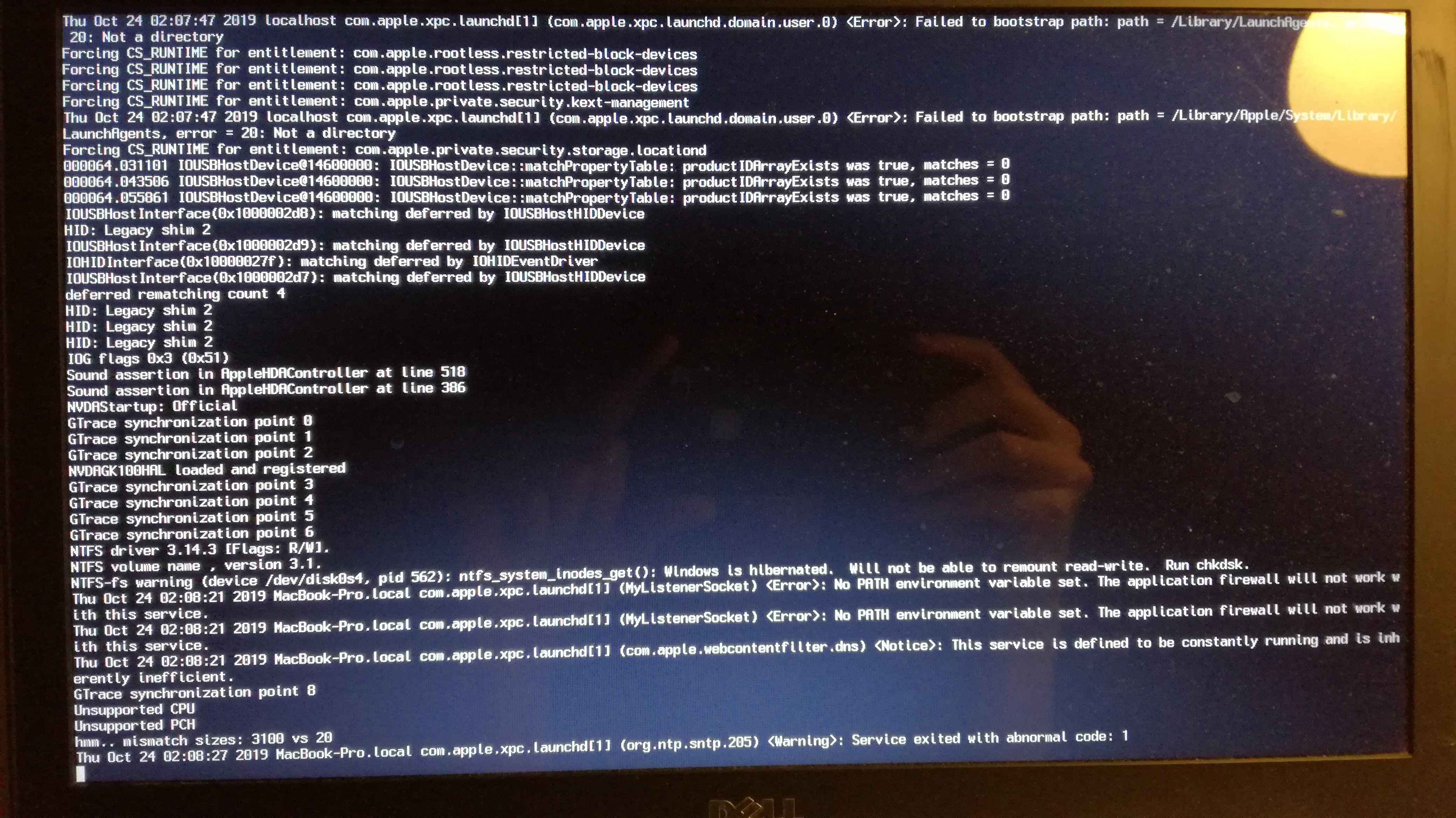Check compatibility
You can upgrade to OS X El Capitan from OS X Snow Leopard or later on any of the following Mac models. Your Mac also needs at least 2GB of memory and 8.8GB of available storage space.
Jan 24, 2013 Simply use F12 to boot from the USB device, and select the USB Device and then boot from the Install mac OS partition. I have defaulted the installer to boot into verbose mode so I can easily see the errors you guys are seeing if you encounter them.

Still Waiting For Root Device El Capitan Installation
MacBook introduced in 2009 or later, plus MacBook (13-inch, Aluminum, Late 2008)
MacBook Air introduced in late 2008 or later
MacBook Pro introduced in mid 2007 or later
Mac mini introduced in early 2009 or later
iMac introduced in mid 2007 or later
Mac Pro introduced in early 2008 or later
Xserve models introduced in early 2009
To find your Mac model, memory, storage space, and macOS version, choose About This Mac from the Apple menu . If your Mac isn't compatible with OS X El Capitan, the installer will let you know.
I was able to install Mavericks with Unibeast, however running Multibeast with any options would cause the install to be unbootable (boots to a black screen, even with -x). I decided to try El Capitan with Unibeast (as that's what I had used with my old build), but the boot hangs at Still Waiting For Root Device and the prohibited sign. Oct 10, 2015 MacBook Pro (Retina, 15-inch, Early 2013), OS X Yosemite (10.10.5), Trying to install 10.11 El Capitan Posted on Oct 1, 2015 6:26 AM Reply I have this question too ( 71 ).
Make a backup
Before installing any upgrade, it’s a good idea to back up your Mac. Time Machine makes it simple, and other backup methods are also available. Learn how to back up your Mac.
Get connected
It takes time to download and install OS X, so make sure that you have a reliable Internet connection. If you're using a Mac notebook computer, plug it into AC power.

Download OS X El Capitan
For the strongest security and latest features, find out whether you can upgrade to macOS Catalina, the latest version of macOS.
If you still need OS X El Capitan, use this link: Download OS X El Capitan. A file named InstallMacOSX.dmg will download to your Mac.
Install the macOS installer
Double-click the downloaded file to open a window showing its contents. Then double-click the file within, named InstallMacOSX.pkg.
Follow the onscreen instructions, which will guide you through the steps necessary to install.
Begin installation
After installation of the installer is complete, open the Applications folder on your Mac, then double-click the file named Install OS X El Capitan.
Click Continue and follow the onscreen instructions. You might find it easiest to begin installation in the evening so that it can complete overnight, if needed.
Allow installation to complete
Still Waiting For Root Device El Capitan Installer
Please allow installation to complete without putting your Mac to sleep or closing its lid. Your Mac might restart, show a progress bar, or show a blank screen several times as it installs both OS X and related updates to your Mac firmware.
Learn more
- OS X El Capitan won't install on top of a later version of macOS, but you can erase your disk first or install on another disk.
- You can use macOS Recovery to reinstall macOS.
As with prior versions of OS X, the new version 10.11 “El Capitan” is available as a free purchase from the App Store, and should then download and run to allow you to upgrade your system. If all goes well, you should see the OS X installation window that instructs you to begin the upgrade process, but there may be instances where this does not appear, or does not work when you attempt the install.
First, the OS X installer should run automatically, but if not then you can try running it manually:
- Go to the Applications folder
- Open the program called “Install OS X El Capitan”
- Follow the on-screen instructions.
An alternative approach is to create a dedicated installation drive from the El Capitan installer, and use that to install the upgrade. For this, you will need a spare external drive (USB drive, or hard drive) that is at least 8GB in size, and then perform the following steps:
Still Waiting For Root Device El Capitan Install Error
- Attach the drive to your Mac
- Use Disk Utility to format it to HFS+ with a GUID partition scheme, naming it INSTALLER
- Open the OS X Terminal and run the following command (copy and paste all 5 lines):
Still Waiting For Root Device El Capitan Install Download
Press Enter to run the pasted command, and supply your password when prompted (it will not show when typed). Note that if you get any errors, be sure your USB drive is formatted and named “INSTALLER” so the command will properly target it. You will also need to have first downloaded the OS X El Capitan installer from the App Store, and have this present in your Applications folder.
The Terminal may take a while to complete this step, but when done you can reboot your Mac and hold the Option key to show the boot menu, and then select the El Capitan installation drive you just created to run the installer and upgrade your Mac’s internal hard drive.
If the procedure still fails with an error, then hopefully you have a full system backup ready, which you can restore to your Mac using the option to restore from a Time Machine backup in the OS X Recovery partition, or whatever cloning software you use. When done, attempt the above procedures to try again.